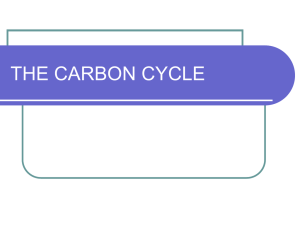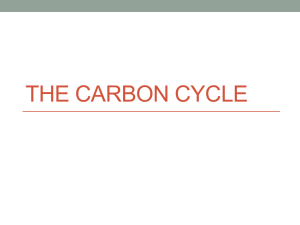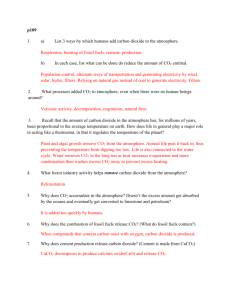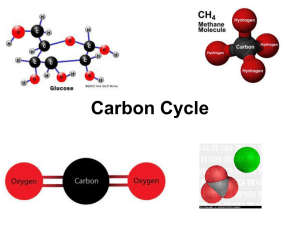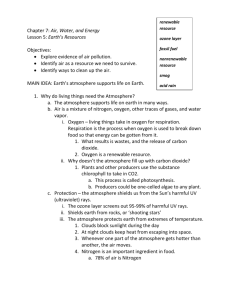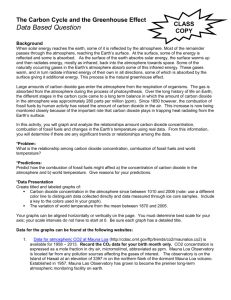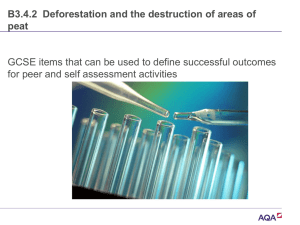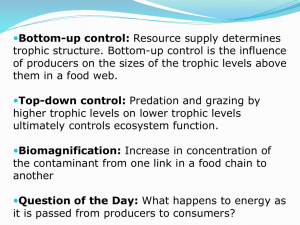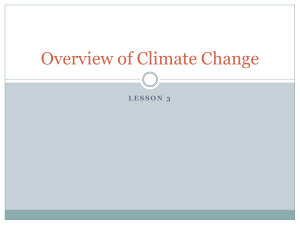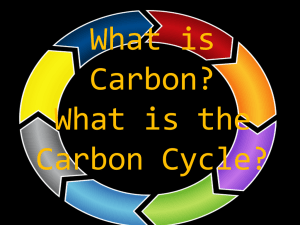Carbon-Cycle
advertisement
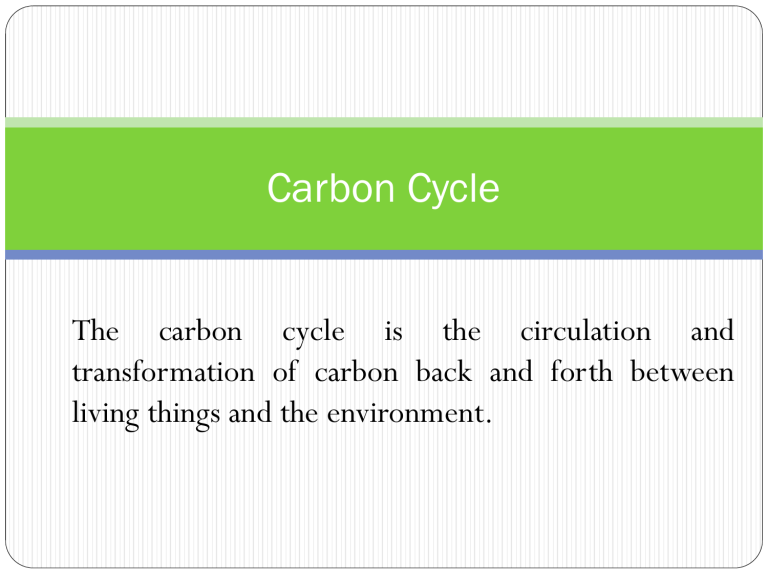
Carbon Cycle The carbon cycle is the circulation and transformation of carbon back and forth between living things and the environment. What Is Carbon? Importance of Carbon Building block of life Fixed amount CO2 is only of the atmosphere (0.04%) Energy balance of the planet Protective blanket Organic Carbon Hydrocarbons: CH4 Carbohydrate: CH2O Inorganic carbon Carbon Dioxide: CO2 Calcium Carbonate: CaCO3 Mandale Limestone Quarry Carbon Carbon exists in the nonliving environment as: Carbon dioxide (CO2) Carbonic acid ( HCO3-) Carbonate rocks (limestone and corals = CaCO3) Deposits of Fossil fuels Dead organic matter Carbon reservoirs •The atmosphere •The biosphere •The oceans •The lithosphere (carbon dioxide) (include fresh water systems and non-living organic material, such as soil carbon) ( including dissolved inorganic carbon and living and non-living marine biota) (sediments, Earth core including fossil fuels) Carbon reservoirs Carbon in Oceans Additional carbon is stored in the ocean. Many animals pull carbon from water to use in shells, etc. Animals die and carbon substances are deposited at the bottom of the ocean. Oceans contain earth’s largest store of carbon. Carbon Cycle The same carbon atoms are used repeatedly on earth. They cycle between the earth and the atmosphere. Plants Use Carbon Dioxide Plants pull carbon dioxide from the atmosphere and use it to make food –— photosynthesis. The carbon becomes part of the plant (stored food). Photosynthesis CO2 + H2O + sunlight CH2O + O2 Carbon is taken from the atmosphere in several ways Photosynthesis. The oceans when the seawater becomes cooler, more CO2 dissolve and become carbonic acid. In the upper ocean areas organisms convert reduced carbon to tissues, or carbonates. Animals Eat Plants When organisms eat plants, they take in the carbon and some of it becomes part of their own bodies. Plants and Animal Die When plants and animals die, most of their bodies are decomposed and carbon atoms are returned to the atmosphere. Some are not decomposed fully and end up in deposits underground (oil, coal, etc.). Carbon Slowly Returns to Atmosphere Carbon in rocks and underground deposits is released very slowly into the atmosphere. This process takes many years. Carbon is released into the atmosphere in several ways Respiration by plants and animals. Decay of animal and plant matter. Combustion of organic material Production of cement. The ocean releases CO2 into the atmosphere. Volcanic eruptions and metamorphism Respiration CH2O + O2 CO2 + H2O + energy Combustion or Oxidization of hydrocarbon CH4 + 2 O2 CO2 + 2 H2O + energy Carbon Cycle Diagram Carbon in Atmosphere Decomposers break down dead things, releasing carbon to atmosphere and soil Fossil fuels are burned; carbon is returned to atmosphere Carbon slowly released from these substances returns to atmosphere Plants use carbon to make food Plants and animals die Bodies not decomposed — after many years, become part of oil or coal deposits Animals eat plants and take in carbon The Carbon Cycle Human Impact Fossil fuels release carbon stores very slowly Burning anything releases more carbon into atmosphere — especially fossil fuels Fossil Fuels Petroleum Natural Gas Coal Fossil Fuel 86% of global primary energy consumption is fossil fuels. Human Impacts on the Carbon Cycle Burning fossil fuels have serious impact on the carbon cycle. Keeling Curve Green House Effect-Global Warming Increased carbon dioxide in atmosphere increases global warming Result What We Need to Do Burn less, especially fossil fuels Promote plant life, especially trees Fewer plants mean less CO2 removed from atmosphere Safe/Green Energy alternatives Thanks for your attention!

